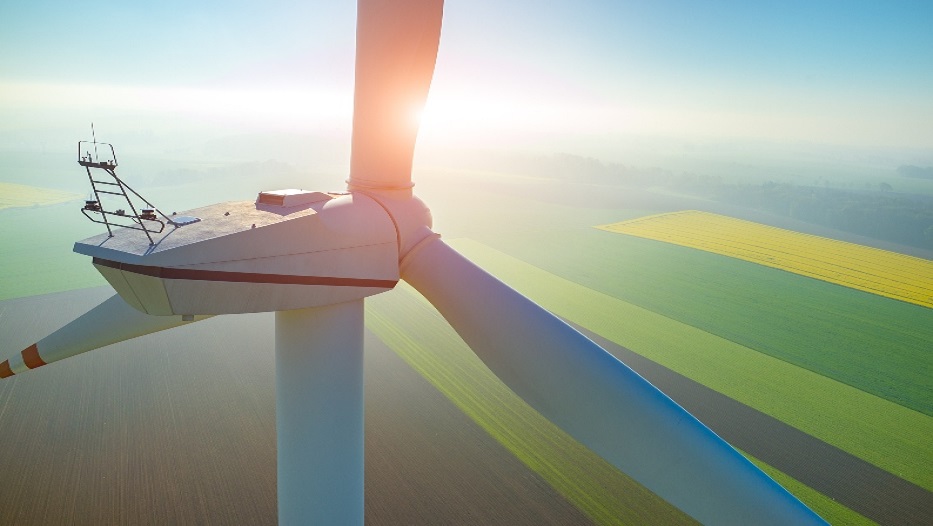admin | 07/09/2018

Latin America is one of the most thriving regions in the world in renewable energies, and large companies are keeping a close eye on it. The governments of these countries pass laws to encourage foreign investment and project financing, in addition to the legal protection of investors.
America has vast solar resources, mainly in countries such as Brazil, Mexico, Chile and Colombia, in addition to the United States. Costa Rica, Uruguay and Paraguay lead the ranking of nations that produce energy almost exclusively from renewable sources. Still, only 6% of the electricity generated in the region comes from alternative or renewable sources, produced from wind, photovoltaic, biomass and geothermal power.
However, Latin American stands out for its enormous potential for generating electricity from unconventional sources coupled with the political will of governments to combat global warming and climate change.
Argentina, Bolivia, Colombia, Mexico, Paraguay, Uruguay, Peru and Venezuela all signed the Paris Agreement on April 22, 2016, at United Nations headquarters in New York. The agreement establishes measures to reduce greenhouse gas emissions (GGE) through mitigation, adaptation and resilience of ecosystems to the effects of global warming.
Ecuador signed it shortly thereafter, on July 26, while Chile did so before the end of the year. Some of the countries in the region that ratified the Paris Agreement are Bolivia, Ecuador, Mexico, Paraguay, Peru and Uruguay. Meanwhile, Chile, Colombia and Venezuela still have not approved it.
By 2050, the goal is for 20% of the energy produced to come from clean sources.
But what is the current situation? What is the energy matrix in these countries and what is the current position of renewable energies?
Renewable energies: present situation
 Argentina. Currently, Argentina appears to be openly committed to the development of solar power, with examples such as Jujuy, a city completely supplied by solar energy. The country has the third largest wind power reserves in the world (more than Spain and Denmark) and the second largest solar power reserves on the planet. Its wind potential exceeds 2,000 GW, one hundred times total installed capacity. In recent years, 1.8 billion dollars have been invested in clean energies, and greenhouse gas emissions have decreased by 30%. 87% of Argentina’s energy matrix comes from fossil fuels. The remaining 13% consists of nuclear energy, hydroelectric power, wind and solar power, and biomass.
Argentina. Currently, Argentina appears to be openly committed to the development of solar power, with examples such as Jujuy, a city completely supplied by solar energy. The country has the third largest wind power reserves in the world (more than Spain and Denmark) and the second largest solar power reserves on the planet. Its wind potential exceeds 2,000 GW, one hundred times total installed capacity. In recent years, 1.8 billion dollars have been invested in clean energies, and greenhouse gas emissions have decreased by 30%. 87% of Argentina’s energy matrix comes from fossil fuels. The remaining 13% consists of nuclear energy, hydroelectric power, wind and solar power, and biomass.
Brazil. The contracted capacity in 2016 was only 709 MW, one eighth the total amount for the previous year. Still, Brazil is one of the emerging countries poised to take off in this field. There are currently 360 wind power projects in the country, and the goal is to capitalize on the 7 billion dollars in investment contracts. Total wind power production is nearly 10 gigawatts while solar production is 2 gigawatts.
Bolivia. Bolivia produces a total of 1,900 MW from its diverse energy sources, though it has taken up the challenge of increasing this amount by 2,695 MW in four years for exporting electricity to neighboring countries in the Southern Cone. Of the total, in 2020, 545 MW will come from renewable energies. Until 2015, 72% of electricity production was thermal, 25% came from hydroelectric systems and 3% from renewable sources. By 2020, thermoelectric production will be reduced to 55%, hydroelectric production will represent 33% and alternative energies will increase to 12% of total production. The planned investment for this period is 1.1 billion dollars.
Chile. Chile is currently leading the solar power revolution in Latin America, as well as investment capacity in clean energy. Over the last seven years, it is the country that has invested the most (7 billion dollars) in renewable projects that include hydroelectric, wind and biomass systems, with more than 80 solar and wind power projects underway. Renewable energy is now cheaper. Solar power plants in operation produce 1,345 MW compared to only 11 MW at the beginning of 2013. The Chilean solar power plant in the Atacama Desert is the largest in South America. It is expected to soon be capable of producing 196 MW. Chile has renewable energy projects worth 9 billion dollars. Its goal is to break its dependence on fossils fuels, which still provide 55% of electricity production. By 2035, Chile plans for 65% of its electricity production to come from renewable sources, a percentage that will be increased to 70% for 2050.
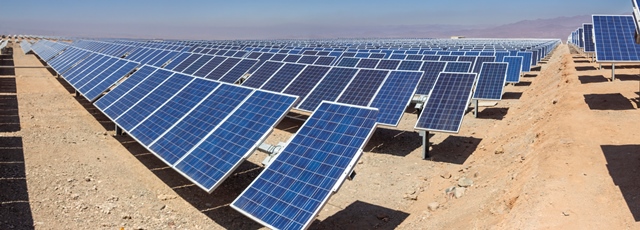
Foto: Desierto de Atacama, Chile
Colombia. While it depends on water sources for 70% of its energy, influenced by climate change, Colombia is one of the Latin American countries most committed to clean energies. Its biomass potential is enormous, with a growing demand for ethanol and biodiesel and significant wind power development possibilities. Despite this, less than 3% of total energy production comes from unconventional renewable sources.
“Mexico, Chile and Uruguay are the most attractive countries for investing in clean energies.”
Costa Rica. For 252 days in 2016, Costa Rica was supplied solely by renewable energies, recording a production matrix of 74.35% electricity through hydroelectric power stations, 12.74% through geothermal power stations and 10.30% from wind sources. Solar power and biomass plants produced 0.01% and 0.74%, respectively. The remaining 1.88% came from fossil fuels.In the last seven years, Costa Rica has invested 1.7 billion dollars in renewable projects involving solar, wind and hydroelectric power. It is expected that renewable energies will become stable energy resources in this country, thanks, among other factors, to the abundance of tropical rainfall and the extensive river basin network that feeds Costa Rica’s hydroelectric power stations.
Cuba. The goal is to install more than 2,100 MW from renewable sources: 755 megawatts in sugarcane bioelectric power stations, 700 MW in solar photovoltaic farms and 633 MW in wind farms. The participation of biomass is a priority for the country in the change in the energy matrix, with the installation of 755 MW through 19 sugarcane bioelectric power stations that will produce 1,900 GWh/year and avoid air emissions of 1.7 million tons of CO2. This installation of 633 MW on 13 wind farms that will produce more than 1,000 GWh/year and avoid the emission of more than 900,000 tons of CO2 is scheduled. Cuba has a solar photovoltaic panel production plant with a production capacity of 14 MW. By 2030, 24% of the energy production will come from renewable sources.
“Costa Rica, Uruguay and Paraguay lead the ranking of nations where energy is produced almost exclusively from renewable sources.”
El Salvador. Significant progress has been made in the country.In 2016, it called the second bidding for renewable power plants, increasing the 100 MW auctioned off two years earlier to 170 MW in solar and wind power. The energy production mix is divided between 43% from fossil fuels, 25% from hydroelectric sources and 26% from geothermal sources.
Guatemala. At the end of 2016, the National Electrical Energy Commission publicized the progress made in transforming the energy matrix with the goal of reducing fossil fuel dependence. 67% of energy production comes from renewable sources compared to 33% from traditional resources. 37% of the total corresponds to hydraulic power production, 21.6% to coal and 24.2% to biomass. Other solar, geothermal, wind, natural gas, biogas, diesel and bunker fuel projects are also involved. The country has the largest solar power plant in Central America and the Caribbean and the second biggest in Latin America (Chile is in first place with a 100 MW plant). The project is called Horus Energy, constructed on 175 hectares in Santa Rosa and with a production capacity of 85 MW.
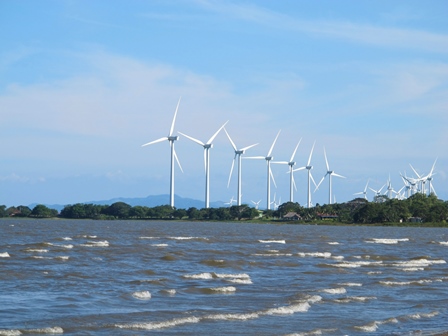
Photo: Wind turbines in Central America
Honduras. It is the Latin American country with the fourth highest rate of investment in renewable energy in last year, probably because it needs the most energy capability while implementing technology to develop its natural resources. Its commitment to combating climate change and the renewable energy investment index in relation to GDP makes it a leader in Central America and third in growth in Latin America. This momentum situates the matrix at 60% of production from natural sources (renewable) and 40% from thermal sources. By 2020, along with Costa Rica, it could achieve 100% renewable energy production.
Mexico. Its renewable energy prospects, in particular solar power, are encouraging for the future. Mexico produces 52,000 MW of hydroelectricity, 13,000 MW of geothermal power and 70,000 MW of wind power. Mexico has Aura Solar I, in Baja California Sur, one of the largest solar power plants in Latin America. By 2050, the country has proposed reducing carbon dioxide emissions by 50%. Mexico is destined to be a leader in energy production from renewable resources, with 35% of the matrix by 2024.
Nicaragua. More than half of the energy produced comes from renewable sources in a country that exceeds 3,000 gigiwatts of electricity and exports up to 5% of total energy produced. Solar power is a crucial factor in the development of electricity coverage throughout the country, which now reaches nine out of ten Nicaraguans and is spreading rapidly in rural areas beyond the national grid system. The goal is to install 12,000 solar panels on the country’s Caribbean coast.In 2012, Nicaragua became the country with the fifth highest investment rate in renewable energies in the world as a proportion of its GDP.By 2020, the goal is for 20% of the energy produced to come from renewable sources, primarily wind, solar and geothermal power.
“Latin America stands out for its enormous potential for generating electricity from unconventional sources coupled with the political will of governments to combat global warming and climate change.”
Panama. The Panamanian Department of Energy estimates that in 2020, the installed capacity of wind power in the country will reach 668 MW. Forecasts suggest that by 2050, the goal of 70% energy production from renewable sources can be achieved.
Peru. Electricity production in Peru has traditionally come from renewable sources (85%), but the development of the Camisea Gas Project has caused that percentage to fall to the point that gas represents more than 49% of production. This trend will continue in the next decade, although the exhaustion of this resource will lead to the diversification of sources. The energy needs of the Andean country vary depending on whether it is an urban or a rural area. In the field of promoting solar power, the challenge is to supply energy to 2.2 million Peruvians in rural areas through renewable means. An example of this is the planned installation of half a million solar panels.
Paraguay. It is supplied almost
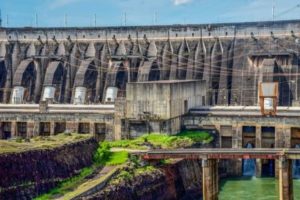
Photo: Itaipú Dam (Paraguay-Brazil)
completely by three hydroelectric power stations (Itaipú, Acaray and Yacyretá), which meet 99.6% of electricity demand from renewable sources; the figure is not 100% because of remote communities that need fossil fuels to survive, though work is underway to correct this situation.
Paraguay. It is a good example of a small country with water resources for electricity production that needs to diversify production and commit more to wind and solar power to complete the transformation of its energy matrix.
Dominican Republic. It is the most fossil fuel dependent country on the entire continent. 92% of its production comes from fossil fuels.
Uruguay. In barely one decade, Uruguay has become the Latin American country with the largest proportion of electricity produced from wind systems as well as being an international leader. Starting in 2013, Uruguay reversed its historical situation of energy deficiency, a true achievement if we keep in mind that over the last 20 years, it had to import energy to meet demand. Now 50% of its energy matrix comes from renewable sources. Photovoltaic power is also being implemented. Laws are being passed for its development while at the same time, tax incentives are being offered to the solar panel sector. The diversification of the energy matrix allowed Uruguay to meet nearly 94% of its electricity needs from renewable energies.
Venezuela. Venezuela is the country with the largest oil reserves in the world and is the fifth-largest producer of hydrocarbons. It is also a driving force behind the OPEC proposal to stabilize oil prices based on the application of production bands instead of through price policy. Still, Venezuela has vast wind and solar energy potential, not to mention hydraulic power, that provides the country with 70% of its electricity needs.
Insurance adapted to sector evolution
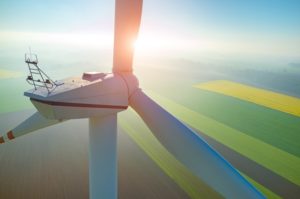
The renewable energy sector is comprehensively being strengthened by powerful incentives and investments, mainly induced by environmental requirements established internationally.
These investments, made to ensure that renewable energies are increasingly competitive, entail the rapid evolution of technology, designs, materials and components.
While this evolution provides many benefits, it also brings greater risks, ones that insurance companies must detect, understand and be able to cover with products adapted to the new requirements.
MAPFRE’s Global Risks Unit has a highly specialized team of experts in renewable energies . This allows us to offer market-leading risk management and insurance solutions that cover both existing and new risks, such as the ones that are evolving in the renewable energies sector.
Thanks to its active participation in the development of insurance solutions for large European investments in renewable energy installations, MAPFRE has acquired vast technical knowledge in underwriting, losses and engineering. This allows us to provide our customers with optimal solutions to better protect themselves from short-, medium- and long-term risks.
In addition, MAPFRE has an extensive network of professionals in every Latin American country. This allows us to operate with a high degree of local autonomy, providing a quick response tailored to each customer, particularly for less than 100 MW wind farms, and taking advantage of our extensive experience in preventing and controlling the most frequent losses at installations of this kind.
.


